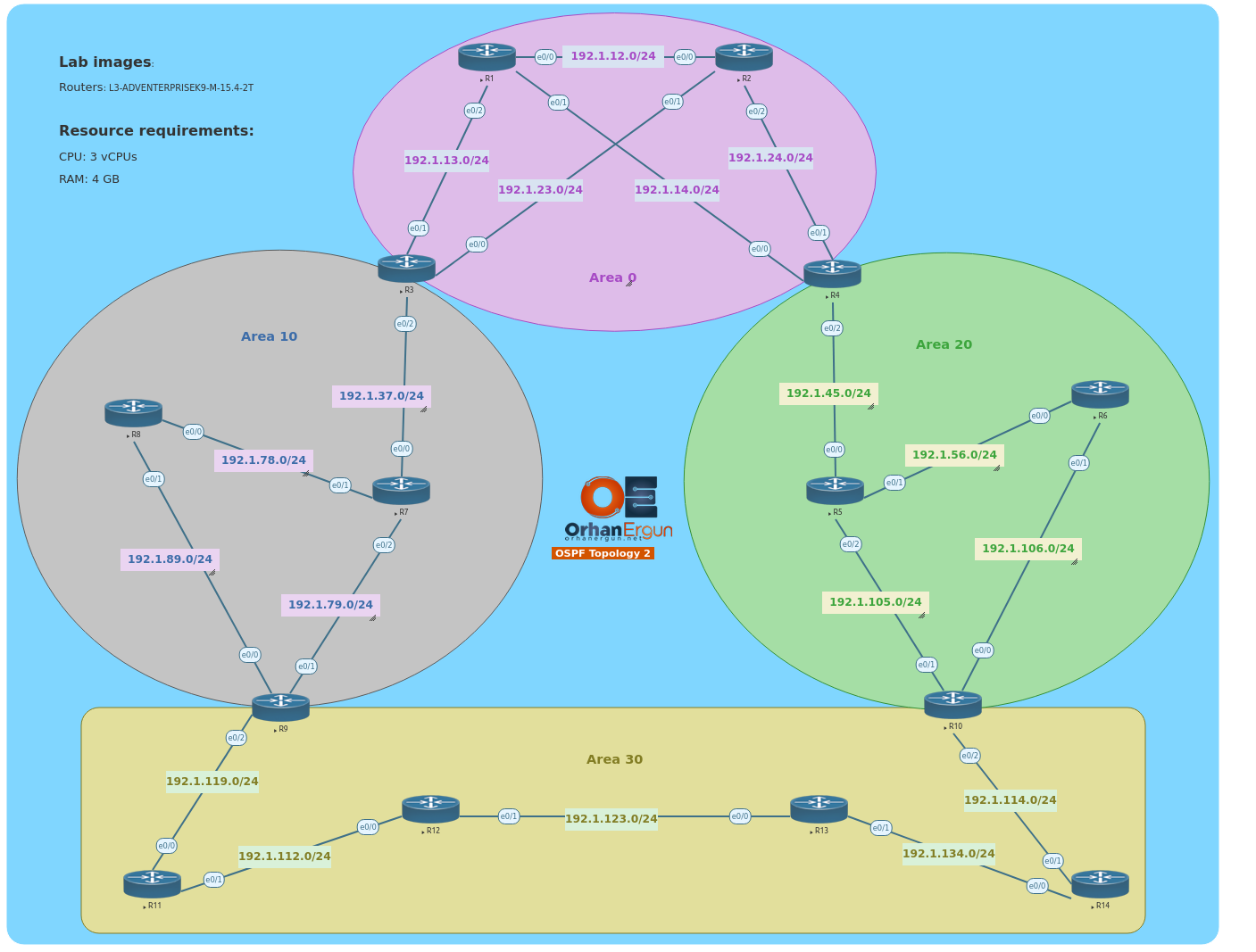Open Shortest Path First (OSPF) is a widely used link-state routing protocol that plays a crucial role in Service Provider (SP) networks for dynamic and efficient IP routing. Unlike distance-vector protocols, OSPF maintains a complete topology map, enabling fast convergence and optimal path selection.
In SP environments, OSPF is typically deployed as OSPFv2 for IPv4 and OSPFv3 for IPv6, with features like multi-area design, route summarization, and traffic engineering (TE) support to improve scalability. Service providers often integrate OSPF with MPLS, using it to distribute loop-free IP reachability while relying on LDP or RSVP-TE for label switching.
Understanding OSPF's behavior in large-scale networks, including LSA types, area types (Stub, NSSA), and SPF optimizations, is essential for building resilient and high-performance SP infrastructures.
You might also be interested in these labs:
The default username and password for images used in this course is as follows, however you will hear new passwords during the course if the instructor changes the credentials:
Image name | Username | Password |
IOL images | No username | No password |
CSR1000v | Admin | Admin |
C8000v | Admin | admin |
Viptela devices | Admin | admin |
Windows Server | Administrator | Test123 |
IOS-XR | Admin | Enter new password |
Cisco ASA 802 | no username | no passwd, hit enter |
Cisco ASA 8.4.2, 9.1.5 | no username | no passwd, hit enter |
Cisco ASAv | no username | no passwd, hit enter |
Cisco IPS | cisco | ciscoips123 |
Cisco WSA | admin | ironport |
Cisco ESA | admin | ironport |
Cisco WAAS | admin | default |
Cisco XR9K | Cisco | Cisco |
Cisco NX9K | admin | admin |

